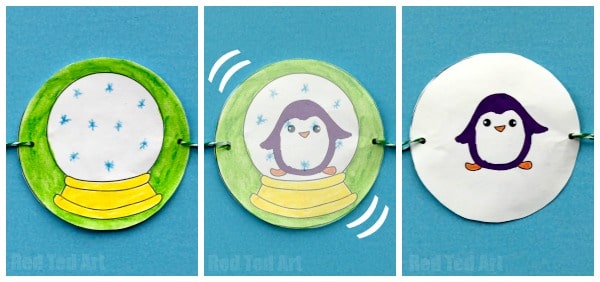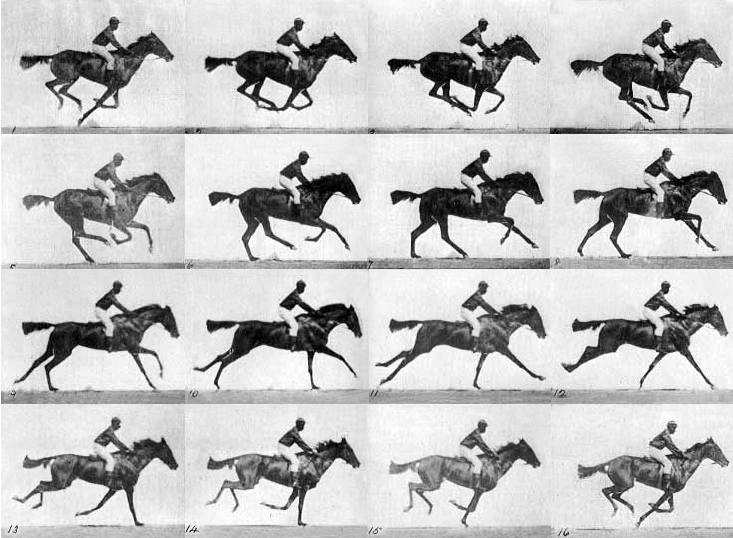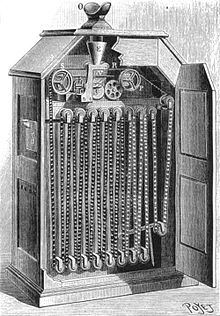These are the 12 principles of animation, simplified information
Number One) Squash and stretch
Rigidity. This is changing the characters/objects shape to make the movement smother and appeal to the eyes more. Adding better movement and volume to the characters/objects.

1) Both in characters and in objects
Number Two) Anticipation
Preparation. Action. Termination. This highlights the speed of the characters/objects. The larger the build up to the anticipated action, the faster the action. This also directs the attention to the viewer to a curtain event.

2) This adds to the reaction as well.
Number Three) Staging
This is showing the action thought the scenery very clearly. This is ether though positioning or framing. This can provide personality and mood.
3) This is key to making the situation very clear
Number Four) Straight ahead and Pose to pose
These are different techniques on how to animate a moving scene. Straight ahead is when the animator draws every individual scene by scene, every little movement. This could have problems if the animator accidentally ends up with the charterers/objects shape being changed indirectly. Pose to pose is when the major poses are drawn in first, after this the animators draw and time the in-between poses later.

4) Every animation will be complected in the end with either technique
Number Five) Follow through and overlapping action
This idea is basic law of Physics, for every action there is an equal and opposite reaction. This means that you cannot just suddenly stop a motion without another force acting on you. There is weight and drag involved, you are slow to stop or start. This is the same as in an animation.

5) There are different forces acting on both the character an the object
Number Six) Ease in, Ease out
Easing in and easing out is very important with calculating the timing of the character/object. This idea shows the acceleration and the deceleration of the character/object by showing how they/it starts moving slow then speed up and slows to a stop.

6) The ball starts slow then picks up speed and slows to a stop
Number Seven) Arcs
This is basically the principle that most objects move in a circular path. This is like the movement in a swinging objects or jumping characters.

7) Movement should be smooth
Number Eight) Secondary Action
Secondary action is an action because of the result of another action. This can be like a characters arm moving and the long loose sleeve swaying forward as well. This does build interest and validness of the character/object.

8) It doesn't have to be just one object, it can be more than one
Number Nine) Timing
This is basically how many frames/drawings are needed to do an action, create the scene, show the emotion effectually. Is is also how to find out how long the animation will be.

9) Each frame is there for a reason
Number Ten) Exaggeration
Animators are always trying to push the limits, this is one area where they do so a lot. This is where animators over exaggerate an idea to show the clear feel, action. This is done though either facial expressions, body language, colouring, etc

10) This is key for a clear understanding
Number Eleven) Solid Drawing
Solid drawing shows if your character has weight, depth and balance. These should be always be considered when drawing or animating any character. A good way to show this is by drawing the character in a 3/4 view.

11) Front on view can make the character look wooden
Number Twelve) Appeal
The most important thing to stride for in animation is the appeal of the audience. This requires quality and charm from a character. Also there should be a good design and story to follow.

12)
Thank You for reading
Reference's
1) dlsy9mediastudies.blogspot.com/.../squash-and-stretch-flexible-faces.html
2) https://www.youtube.com/watch?v=F8OtE60T8yU
3) https://www.youtube.com/watch?v=u-SXLaQGg50
4) https://www.youtube.com/watch?v=v8quCbt4C-c
5) blog.animationmentor.com/follow-through-and-overlapping-action-the-12-basic-prin...
6) https://css-tricks.com/ease-out-in-ease-in-out/
7)https://www.youtube.com/watch?v=I1_tZ9LhJD4
8)https://www.youtube.com/watch?v=MjBHWw1TbP4
9)https://www.youtube.com/watch?v=KRVhtMxQWRs
10)blog.animationmentor.com/exaggeration-the-12-basic-principles-of-animation/
11)blog.animationmentor.com/solid-drawing-the-12-basic-principles-of-animation/
12)https://www.argeerubberstamps.com.au/























 1) Both in characters and in objects
1) Both in characters and in objects







